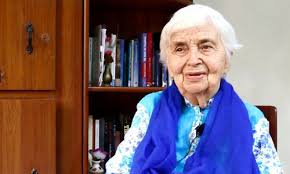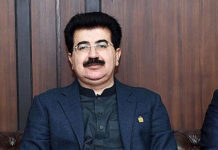By Muhammad Luqman
A state funeral was held in Karachi for Dr. Ruth Pfau, the savior of Pakistan’s lepers who passed away at the age of 87 earlier this month.
Pfau was a German-Pakistani doctor who dedicated her life to helping leprosy patients in this South Asian country and is one of the founders of Marie Adelaide Leprosy Centre (MALC).
Armed forces personnel carried the casket containing Dr Pfau’s body into St Patrick’s Cathedral in Karachi’s down town Saddar area on Saturday. The coffin was draped in the Pakistani flag and covered with rose petals, according to media reports.
After her final rites were performed at the church, the coffin of ‘Pakistani Mother Teresa’ Dr Pfau was taken to Gora Qabaristan, Karachi’s oldest graveyard, where she was laid to rest.
The burial ceremony was attended by many dignitaries including President Mamnoon Hussain, Sindh Chief Minister Murad Ali Shah, Sindh Governor Muhammad Zubair, Chief of Army Staff Gen Qamar Javed Bajwa, Air Chief Marshal Sohail Aman and Deputy Chief of Naval Staff (Operations) Vice Admiral Zafar Mahmood Abbasi, who also laid floral wreaths on her grave.
This was the second state funeral to have taken place in Pakistan in past 29 years, with the last one accorded to Abdul Sattar Edhi last year.
Politicians, military officials, members of civil society and hundreds of supporters attended the service and paid tributes to Dr Pfau.
Dr Pfau, a German national by birth, had been sent to Pakistan in 1960 by the Daughters of the Heart of Mary, a congregation of nuns that she was a member of, for a medical service for students. After witnessing the plight of leprosy patients, she decided to settle here. She was granted Pakistani citizenship in 1988.
In 1979, she was awarded the Hilal-i-Imtiaz, the second highest civilian award of the country. In 1989, Dr Pfau was presented the Hilal-i-Pakistan for her services.
Due to Dr Pfau’s efforts, Pakistan was declared a leprosy-free country in 1996 by the World Health Organization.















